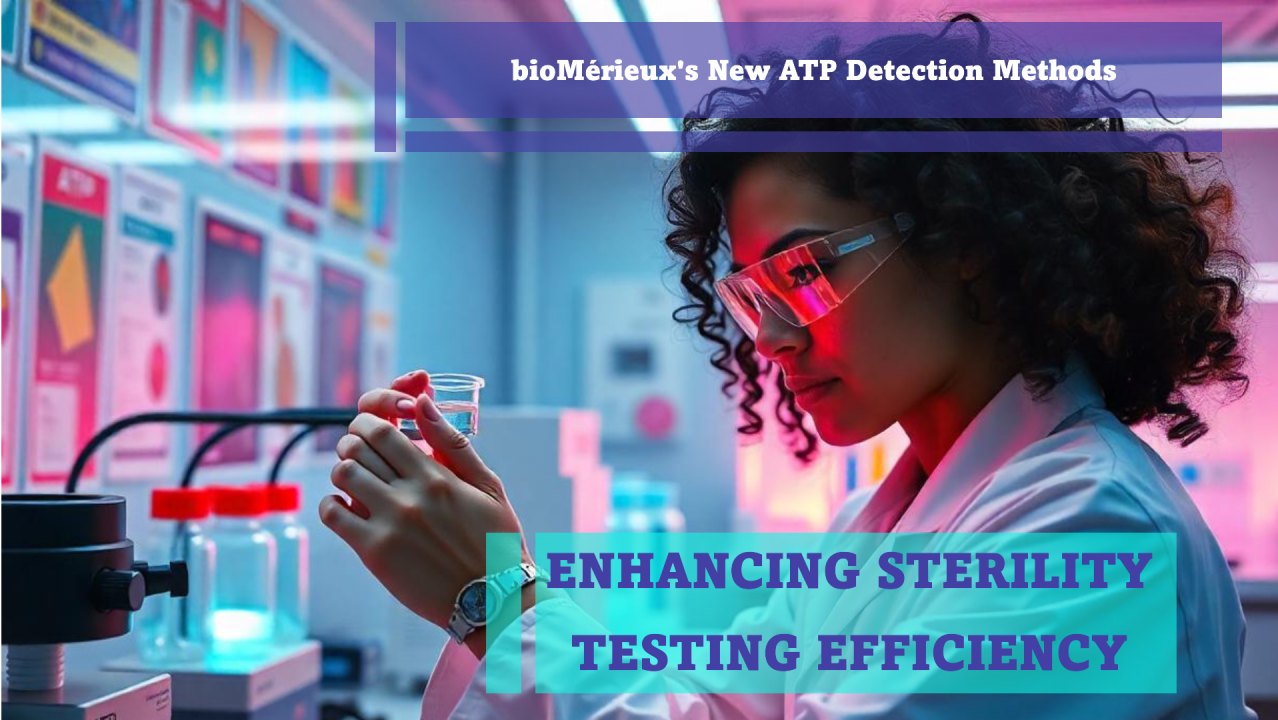Rapid Sterility Testing Market Research: Technology Insights for 2024
As the demand for rapid sterility testing continues to rise across the pharmaceutical and biotechnology sectors, understanding the latest technological advancements is critical for investors.
If you are seeking technology insights in rapid sterility testing, focusing on membrane filtration and ATP bioluminescence technologies, here’s the essence. We will also highlight innovations from leading companies in the field.
What Are the Key Technological Advancements in Membrane Filtration and ATP Bioluminescence for Rapid Sterility Testing in 2024?
In 2024, the rapid sterility testing market is witnessing significant advancements in both membrane filtration and ATP bioluminescence technologies. Membrane filtration has evolved with the introduction of high-efficiency filtration membranes that reduce the risk of false negatives by providing a higher level of sensitivity and specificity.
These membranes allow for the rapid detection of microorganisms, making them ideal for the pharmaceutical industry, where quality control is paramount.
On the other hand, ATP bioluminescence technology is advancing through the development of more sensitive detection systems that can measure lower levels of ATP, enhancing the ability to detect contamination in real-time.
Innovations in chemistries and reagents are also improving the reliability of results, leading to quicker and more accurate assessments of sterility.
Leading Innovators:
- Thermo Fisher Scientific is enhancing its ATP bioluminescence systems with automated solutions that streamline workflow and improve efficiency.
- Charles River Laboratories is focusing on integrating AI and machine learning in membrane filtration processes to predict contamination risks better.
How Do Membrane Filtration and ATP Bioluminescence Compare in Terms of Effectiveness, Speed, and Cost-Efficiency for Rapid Sterility Testing?
Both membrane filtration and ATP bioluminescence technologies offer distinct advantages and challenges in rapid sterility testing.
- Effectiveness: Membrane filtration is highly effective for detecting a wide range of microorganisms and is often used as a confirmatory method for sterility tests. In contrast, ATP bioluminescence provides rapid results, making it suitable for environments where time is critical.
- Speed: ATP bioluminescence typically offers faster results, often within minutes, while membrane filtration may take several hours to complete due to incubation times. However, membrane filtration's thoroughness can be more reliable for final sterility confirmation.
- Cost-Efficiency: While ATP bioluminescence tests can be cost-effective for routine screening, membrane filtration systems may have higher initial costs but can provide greater long-term value through more reliable results and lower rates of false negatives.
Comparative Insights:
- Merck KGaA has developed cost-effective membrane filtration systems that reduce operational expenses while maintaining high performance.
- bioMérieux is innovating in ATP bioluminescence with new platforms that lower the cost per test, making it more accessible for smaller labs.
What Are the Regulatory Challenges and Compliance Requirements Associated with Implementing These Technologies in Rapid Sterility Testing?
Regulatory compliance is a crucial factor in the rapid sterility testing market. Both membrane filtration and ATP bioluminescence technologies must adhere to strict guidelines set by regulatory bodies like the FDA and EMA.
Key challenges include:
- Validation: Both technologies require extensive validation to ensure they meet regulatory standards for accuracy and reliability.
- Documentation: Maintaining comprehensive documentation of testing processes, results, and compliance with Good Manufacturing Practices (GMP) is essential.
- Training: Proper training for personnel using these technologies is necessary to ensure accurate and compliant testing.
Regulatory Leaders:
- Sartorius AG offers robust regulatory support services to assist clients in navigating compliance challenges.
- Rapid Micro Biosystems provides training programs to ensure proper implementation of their rapid testing solutions.
Which Companies Are Leading the Development and Commercialization of Membrane Filtration and ATP Bioluminescence Technologies, and What Are Their Market Shares?
The rapid sterility testing market is highly competitive, with several key players driving innovation in membrane filtration and ATP bioluminescence technologies.
- Eurofins Scientific is a market leader with a substantial share, known for its comprehensive testing services and innovative technologies.
- Becton, Dickinson, and Company has made significant strides in integrating advanced technologies into their sterility testing processes, enhancing their market position.
- Gibraltar Laboratories and FOCUS Laboratories are also emerging as important players, focusing on niche markets and specialized testing solutions.
These companies continuously invest in R&D to refine their technologies and maintain a competitive edge in the rapidly evolving market landscape.
For more information visit at MarketResearchFuture
Other Trending Reports



